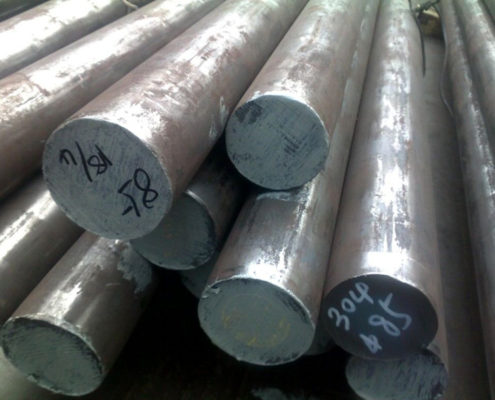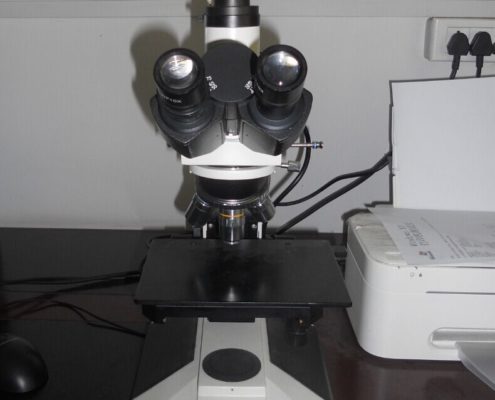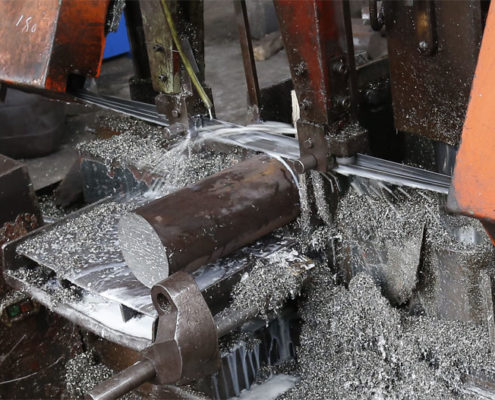|
Plate flange features high accessibility of its raw materials, easy manufacturing, low cost. |
|
And good comprehensive performance. Hence, it is widely used in many fields such as chemical industry. |
|
Construction industry, water supply system, water drainage system, petroleum industry, heavy and light industry,refrigeration industry, hygienic industry, water heating system, fire protection sector, power supply industr aerospace industry and shipbuilding industry. |
|
The raw materials we use for production of fittings and flanges consist of carbon steel, stainless steel andalloy steel. |
||
|
|
|
|
|
1.Raw Material
Raw Material Check
Quantity Check
Visual & Dimension Check
|
2. Material Inspection
Chemical Analysis Check
Preservation Analysis Certificate
|
3. Material Cutting
Weight Measuring
Cut Surface Check
Marking
|

|
Main Processing Technology
Material Re-inspection → Material Re-inspection → Blanking → Heating → Die Forging → Removing Residues → Machine Processing → Heat Treatment → Finishing Machine Processing → Surface Processing → Finished Product Inspection → Marking Protection → Storage
(Note: Stainless steel processing acid pickling passivation process)
Size
1/2"-160" DN 12mm to DN 4000mm
Standard
ASTM A234
WPB, WPC, WP11, WP12, WP5, WP91, WP22
ASTM A403
WP304, WP304L, WP316, WP316L, WP321
ASTM A420
WPL3, WPL6
API 5L
L245(NB), L290(X42), L320(X46), L360(X52), L390(X56), L415(X60), L450(X65), L485(X70), L555(X80)
EN 10253-2
P235GH, P265TR2, P265GH, P355NH
L245(NB), L290(X42), L320(X46), L360(X52)
L390(X56), L415(X60), L450(X65), L485(X70), L555(X80)
ASTM A105
A105, A105N
ASTM A350
LF1, LF2, LF3
ASTM A694
F42, F45, F50, F52, F56, F60, F65, F70
ASTM A182
F5, F9, F11, F22, F91, F304, F304L, F316, F316L, F316H, F321
Pressure class
Class 150 to Class 2,500, PN 2.5 to PN 250
Color
Black, Yellow, Blue, Red. etc as client requirment.
Surface Coating
Rust-proof oil; Black; Galvanized; Polyethylene Coating; Epoxy Coating, etc
Marking
Marker permanent
Package
Ply-Wooden Case for small size Pallet for big size
Certificate
BV ISO9000,CRN,CE
The Third Party Inspection
BV, SGS, LOIYD, TUV, and other party alloyed by clients
Brand
TSZHONGRAN
Min Order
1PCS
Payment Terms
T/T, 100% LC AT SIGHT, 100% LC 30 OR 60DAYS AFTER BL OF DATE,
Delivery Time
7-30days according to acutal order.
Delivery Port
TIANJIN, QINGDAO, SHANGHAI, NINGBO, SHENZHEN,
Delivery Ability
3000TONS/MONTH
Applicating
Paper-marking, Oil and natural gas pipeline, Boiler and heat exchanger, Smelting,Water conservancy, Electric power, Chemical, Pharmaceuticals etc
Main Equipment and Installation
1. Two forging hammers (splint type)
2. Two punches (splint type)
3. Friction Press: 150T
4. Coal-fired heating furnace: 4 M2
5. Fuel Heating Furnace: 4 M2
6. Heat treatment and auxiliary equipment (with other fittings)
7. Machining equipment: 1. Lathes: under 50 60 units Lift: 1600 2 sets 3200 1 set
Drilling machine: Z3132alpha
Drilling machine: Z3125
160 sets of moulding dies with various specifications
Referring to the corresponding standards and user technical requirements, and combining with our company's specific manufacturing equipment, testing equipment and other conditions and formulation.
3.3.4. When transverse wave testing is carried out by ultrasonic testing, the sensitivity of testing equipment should be calibrated by using the contrast standard sample. The contrast standard sample has the same technology, material and specifications as the measured sample. In the direction of vertical wall thickness of the contrast standard sample, the vertical through hole with 1.6 mm diameter should be drilled. If the signal generated by the defect is greater than or equal to 1.6 of the contrast standard sample. It is considered that the defect must be repaired when the echo height of the mm diameter through hole is 100%. If the signal produced by the defect is a layered defect, the longitudinal wave detection can be used. The sensitivity calibration of the longitudinal wave detection should be the same as that of the measured part in technology, material, specifications, drilling a 6 flat bottom hole on the comparative standard sample, and the depth of the flat bottom hole is half of the thickness of the measured part.
|
- Telphone- 0317-6165555 6689999
- E-mail- [email protected]
- Address- Yanshan County Industrial Park, Cangzhou City, Hebei Province
- Telphone- 0317-6165555 6689999
- E-mail- [email protected]
- Address- Yanshan County Industrial Park, Cangzhou City, Hebei Province











